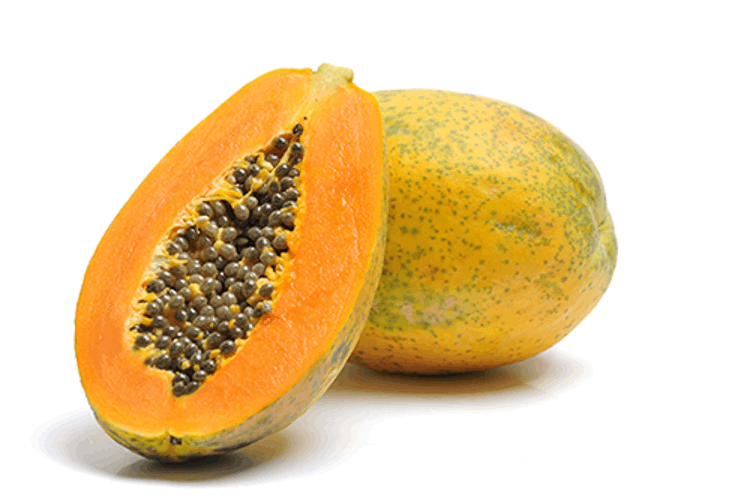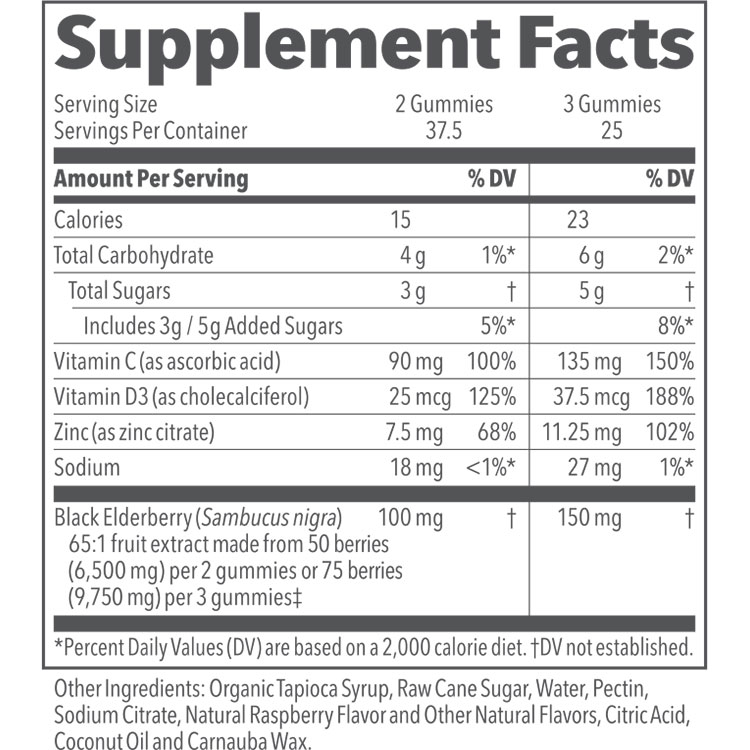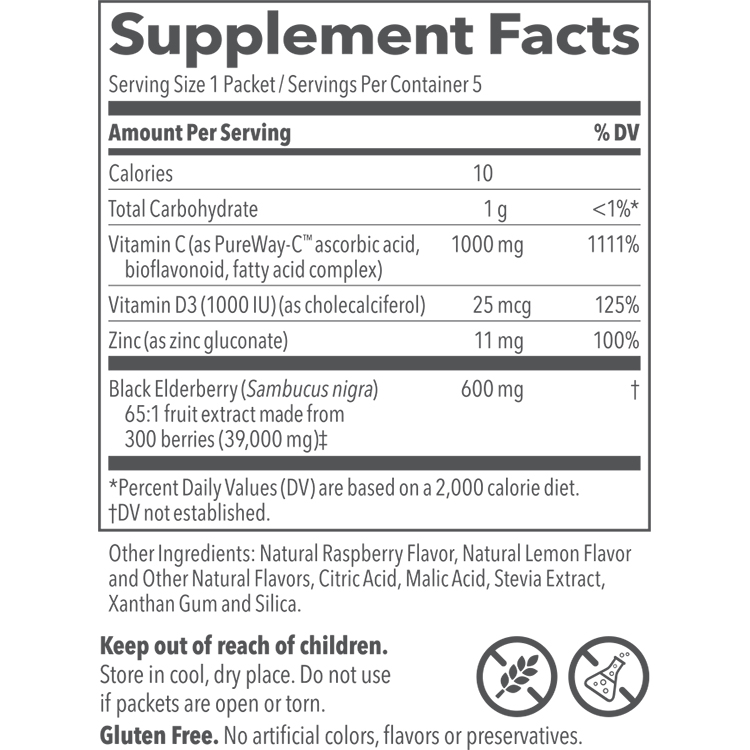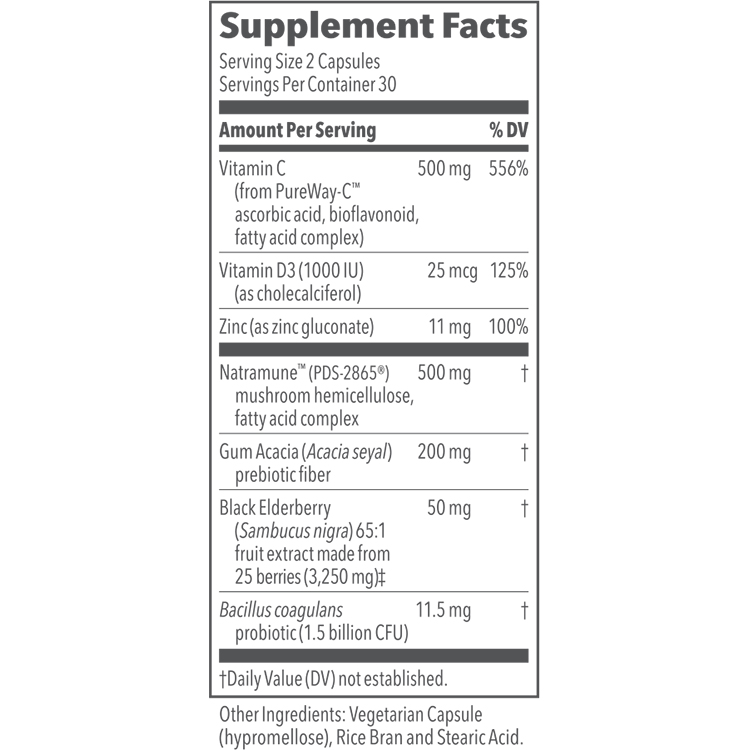BACKGROUND
Ingredient Type: Fruit Constituent, Enzyme
Also Known As: Carica papaya, Concentré de Protéase Végétale, Papaina, Papainum Crudum Pepsine Végétale, Plant Protease Concentrate, Protease, Potéase, Vegetable Pepsin

Papaya, or Carica papaya, is an herbaceous tropical fruit plant that was originally domesticated in Mesoamerica or what is considered today as Central America and Mexico. From there, cultivation now spans Central Africa, Australia, Hawaii, India, and the Philippines (9). What makes papaya so valuable is its chemical constituents. The pulp, seeds and skin contain carotenoids, polyphenols as well as enzymes which are found when the papaya fruit is scored or scratched, leaving behind a milky substance known to contain this enzyme, papain.
Papain is known as a proteolytic enzyme due to its ability to break down large proteins into smaller, more functional units known as amino acids. Such proteolytic enzymes are commonly used to aid in digestion because of its ability to break apart proteins. Outside of its medicinal use for digestion, inflammatory relief, skin support and parasitic relief, papain has been used for everything from tenderizing meat to cleaning contact lenses and being used in cosmetics and toothpaste. Under Patent No. 995,825, papain was even utilized to childproof beer bottles (12).
TRADITIONAL USES
According to records, papaya seeds were taken to South American and the Philippines during the 1500’s. From there the plant spread across most of the warm, tropical regions of Bermuda, the Bahamas, southern Mexico, as well as the Indian subcontinent (9). It is said that over 500 years of cultivation has been documented. Early civilizations used papaya as both food as well as medicinal purposes. Some of the medicinal purposes included: gastrointestinal disorders, urinary tract infections, as a purgative, healing for skin abrasions, to expel parasitic worms and even for anti-fertility (14). As far as the enzyme, papain, this was used to clarify beer and tenderize meats as well.
WHAT DOES SCIENCE TELL US?
Papain and Digestion
In industrialized as well as tropical countries, the use of papaya for digestive disorders and discomforts is well known. Although positive results are well supported in these areas, less clinical research has been conducted in order to produce its physiological effect on the human population. This double-blind, placebo-controlled study was designed to study the clinical effects of the papaya preparation, Caricol®. The volunteers in this study participated either due to chronic indigestive issues or matters concerning their gastrointestinal tract. A list of 22 symptoms and their frequency were recorded before as well as following the study via a questionnaire. Participants either received 20ml of the placebo or 20ml of Caricol® for a 40-day duration. Those in the treatment group noted significant improvements in their symptoms of bloating, constipation, and heartburn. The researchers concluded that the papaya preparation, Caricol® positively contributed to the healthy maintenance of both the digestive, as well as the gastrointestinal tracts of those suffering from chronic conditions (10).
Historically, papaya has been used to resolve gastrointestinal concerns, especially in folk medicine. Due to the extremely limited resources as it relates to scientific research and papain in general, researchers in this study aimed to assess the effects of its enzymatic activity on gastric motility in an in vitro model. According to the results, the use of papain was found to increase the gastric contractions without noting an effect on frequency or muscle tone. During this study, three doses of papain were utilized, 12.5mg, 50mg & 100mg; yielding a dose-dependent relaxation reaction and contraction. Through further analysis, it was concluded that the effects of papain are not neurally mediated but a result of enzymatic activity; thus, resulting in potential resolution of gastrointestinal disorders as suggested by historical populations (2).
Papain and Inflammation
The papaya plant is known by many natives to treat various digestive as well as inflammatory conditions. With limited research on the effects of papain, this research review conducted was with the intent on shedding light on how papain can also support chronic and acute inflammation. In addition to present studies, in vivo and in vitro studies were also included in this review. What the researchers found during this review was mainly that papain exhibited both anti-inflammatory as well as immunomodulatory activity in vivo and in vitro studies predominantly. As far as clinical studies are concerned, there was little if any research present to the effect of papain and its effects on inflammation (11).
Papain, which is considered a proteolytic enzyme has many functions in nature as well as within the human body. One of the essential responsibilities of such enzymes is their role in inflammation and other closely related functions within the immune system. Inflammation is the body’s mechanism at protecting itself from danger, whether duet to an internal or external threat. A few of the body’s most common symptoms of inflammation are erythema (redness), heat, swelling, pain and movement restriction. These symptoms are the body’s way of responding and signaling its immune resources to help address the impending threat. The role of proteolytic enzymes such as papain is that they act as immune system regulators. In such, they can aid in enhancing lymphatic drainage by breaking up pathogenic immune complexes, they can reduce blood clot-forming fibrin deposits to support more optimal blood viscosity, as well as further modulating the inflammatory process to support more efficient and effective recovery. Researchers are just beginning to understand the vast uses of proteolytic enzyme therapy. It has been said that proteolytic enzymes exhibit the anti-inflammatory activity that is equal to or more superior to four current steroidal and non-steroidal anti-inflammatory drugs (6).
Papain and Obesity
Being that there is little to report on many of the benefits of the proteolytic enzyme derived from papaya, papain, researchers of this study sought to assess it anti-obesity and anti-inflammatory effects. This study examined the respective effects in in vivo and in vitro models utilizing a high-fat diet (HFD)-induced obesity in the mouse model. According to the researchers’ observations, oral administration of papain was found to reduce the HFD-induced weight in the body, liver and surrounding adipose tissues. Additionally, following the papain administration, it was found that the subjects had reduced hepatic lipid accumulation and adipocyte size. As a result of these observations, the serum total cholesterol and triglycerides levels were respectively decreased. It was suggested that the results in part are a response to the papain-induced regulation of the adipogenic factors involved in inflammation and lipid metabolism. It was suggested, with additional supporting research, that papain could be a potential alternative in the treatment for obesity (4).
Papain and Wound Healing
As it relates to the pharmaceutical industry and their prioritization of utilizing biocompatible ingredients in order to improve outcomes and safety, more and more research is being conducted on the components of wound dressing. A constituent better known as alginate, derived from brown algae, is very commonly studied due to its biocompatible and biodegradable features. More recently researchers have been looking at papain in the hopes of utilizing its enzymatic and anti-inflammatory features in order to increase wound healing. The main focus, at least in this study, is the enzymatic effects of papain and how it would help promote the debridement of necrotic tissues during the wound healing process. Upon testing and comparison of the results and effects of alginate, it was recognized that papain also performs just as well in relation to its ability to stabilize enzymatic structure of the tissues and protection of the enzyme from deactivation, thus allowing the enzyme to remain active and functional during the wound healing process (8).
A similar systematic review was conducted in order to assess the evidence behind the use of papain in wound healing. The electronic research databases reviewed included: CINAHL, Cochrane, IBECS, MEDLINE and Pubmed. The article timeframe reviewed for papain and its effects on wound healing was from 1987 to 2010. Similarly, as noted today, a lot of the relevant studies were considered more explorative research, case studies and case reports, with only one randomized controlled clinical trial. Upon completion of the systematic review, it was observed that papain was an effective and safe treatment for wounds in various stages of healing and etiology. The only noted concerns while using papain was that some individuals experienced sensations of burning and pain which can be attributed to its enzymatic activity and potency when used in larger amounts. It was concluded that papain may be an excellent alternative for treating wounds, although further studies must be conducted in order to further support the findings (5).
This promising and very exciting study was conducted in order to test the efficacy of a new, papain-based wound-cleansing formula in the management of wounds. The aim of this formula was to combine a wound cleansing component with an active debridement ingredient in order to best accelerate wound healing. The papain-based wound cleanser was used to treat incisions on Sprague-Dawley subjects while a combination of water and Betadine was used as both a positive and negative control. In this study, twenty-seven clinically healthy subjects were randomly divided and treated accordingly post incision. The subjects treated with the papain-based treatment showed significantly progressive wound healing when compared to the rats treated with the control solution, as observed though wound reduction rates and histological analysis. What was also noted in the subjects treated with the papain-based solutions was that better collagen deposition and presence of skin organelles. Researchers attributed their observations to papain’s activity to cleanse, debride and concurrently provide antibacterial properties. While further studies are necessary to ensure safety and efficacy for human application, papain has a lot of potential regarding wound healing (1).
SAFETY
Due to the research behind papain being extremely limited, it is safe to recommend papain to be as safe if consumed in the amounts commonly found in its whole, papaya form. Regarding consuming or applying papain topically, it is considered somewhat safe as long as the levels administered are commonly found in similar supplements or topicals. Dosages administered orally, in larger amounts, are considered potentially unsafe as irritation of the throat and gastrointestinal lining may result. Additionally, due to the rather limited availability of research present on the effects, safety and toxicity of papain in general, it is wise to be cautious about ingesting dosages beyond what is commonly found in a single serving (13).
Side Effects:
For those who are currently pregnant or plan on being pregnant, it is suggested that consumption of papain during pregnancy, especially at higher doses, may result in birth defects or miscarriage. While there is not enough evidence or related case studies to confirm these concerns, it is suggested to speak with your medical professional prior to consuming papain if you are planning on or are currently pregnant or are breastfeeding (13).
If you are aware of allergies to fig or kiwi fruits, it is recommended to be cautious when consuming papain as those with allergies to figs or kiwis may have a similar allergic reaction to papaya and/or papain as suggested in a case report (3).
Those who have been diagnosed with or are suspected to have one of the following blood clotting disorders are advised to contact a medical professional prior to consuming papain due to its enzymatic activity which may potentially increase the risk of bleeding. Some of the more well-known blood clotting disorders include hemophilia, idiopathic thrombocytopenic purpura, thrombosis and lupus anticoagulant syndrome. Additionally, those preparing for surgery are advised to stop taking papain 2 weeks prior to surgery in order to avoid the risk of bleeding during surgery (13).
**Please note, consumption of the leaf component does not have the same benefits as does consuming papain. While it is generally considered safe to consume preparations incorporating the leaf of C. papaya, it is not recommended to consume this constituent long term as it may result in unwanted side effects and/or potential liver impairment (7).
Interactions:
It is recommended to take extreme cautions when taking papain while concurrently on blood thinning medications such as Warfarin. Further it is recommended that you consult with your medical professional prior to consuming papain as it potentially may increase the risk of bruising and bleeding.
REFERENCES
- Ajlia, S A S H et al. “Efficacy of papain-based wound cleanser in promoting wound regeneration.” Pakistan journal of biological sciences: PJBS 13,12 (2010): 596-603. doi:10.3923/pjbs.2010.596.603
- Annaházi, Anita et al. “Region-specific effects of the cysteine protease papain on gastric motility.” Neurogastroenterology and motility: the official journal of the European Gastrointestinal Motility Society vol. 33,7 (2021): e14105. doi:10.1111/nmo.14105
- Díez-Gómez, M L et al. “Asthma caused by Ficus benjamina latex: evidence of cross-reactivity with fig fruit and papain.” Annals of allergy, asthma & immunology: official publication of the American College of Allergy, Asthma, & Immunology vol. 80,1 (1998): 24-30. doi:10.1016/S1081-1206(10)62934-1
- Kang, Yun-Mi et al. “Papain Ameliorates Lipid Accumulation and Inflammation in High-Fat Diet-Induced Obesity Mice and 3T3-L1 Adipocytes via AMPK Activation.” International journal of molecular sciences vol. 22,18 9885. 14 Sep. 2021, doi:10.3390/ijms22189885
- Leite, Andréa Pinto et al. “Uso e efetividade da papaína no processo de cicatrização de feridas: uma revisão sistemática” [Use and effectiveness of papain in the wound healing process: a systematic review]. Revista gaucha de enfermagem 33,3 (2012): 198-207. doi:10.1590/s1983-14472012000300026
- Lenard, L et al. “Controlling Inflammation with Proteolytic Enzymes.” Nutrition Review. 24 April 2013. Controlling Inflammation with Proteolytic Enzymes | Nutrition Review
- Lim, X Y et al. “Carica papaya L. Leaf: A Systematic Scoping Review on Biological Safety and Herb-Drug Interactions.” Evidence-based complementary and alternative medicine: eCAM vol. 2021 5511221. 7 May. 2021, doi:10.1155/2021/5511221
- Moreira Filho, Raimundo Nonato Fernandes et al. “Papain immobilized on alginate membrane for wound dressing application.” Colloids and surfaces. B, Biointerfaces vol. 194 (2020): 111222. doi: 10.1016/j.colsurfb.2020.111222
- Morton JF (1987). “Papaya”. NewCROP, the New Crop Resource Online Program, Center for New Crops & Plant Products, Purdue University; from p. 336–346. In: Fruits of warm climates, JF Morton, Miami, FL. Retrieved 23 May2015.
- Muss, Claus et al. “Papaya preparation (Caricol®) in digestive disorders.” Neuro endocrinology letters vol. 34,1 (2013): 38-46.
- Pandey, Saurabh et al. “Anti-inflammatory and immunomodulatory properties of Carica papaya.” Journal of immunotoxicology vol. 13,4 (2016): 590-602. doi:10.3109/1547691X.2016.1149528
- Benefits of the Enzyme Papain (Carica papaya) from the Enzymology Research Center. Stauber (Hawkins). Retrieved on 18 July 2022 from Papain Research and Benefits – Enzymology Research Center | STAUBER (stauberusa.com)
- RxList. Retrieved Retrieved on 18 July 2022 from Papain: Health Benefits, Side Effects, Uses, Dose & Precautions (rxlist.com)
- Where Does Papaya Come From? HerbaZest. Retrieved on 18 July 2022 from Where Does Papaya Come From? | HerbaZest




